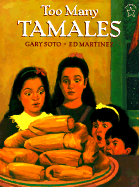
Title: Sofie and the City
Author: Karima Grant
Illustrator: Janet Montecalvo
Stars: 4 out of 5
Summary: Sofie, a little girl who has moved to the city, does not like the city. She tells her grandma every Sunday that she wants to live with her and if she leaves “no one will miss me”. One day she becomes friends with a girl named Kenya. From then on the city isn’t so ugly.
This is a very pretty and heart warming story. I love the way the story ends with Sofie making a friend and finally being happy. This shows the reader how strong the sense of friendship can be. The story centers around a little girl who is new to a big city. I think this is a great way to show students who do not live in a city one perspective of the city. It is also a great way to show kids who do live in the city another perspective. I love the way Grant portrays Sofie as such an outsider at first. I feel that this character would really connect with a lot of students considering many children feel left out at some point in their lives. This is a great window book for me considering I have never lived in a big city. It really shows how the city can be a melting pot for all kinds of people from all over the world. I really like the way Grant brings up the little girl’s English a couple of times throughout the story. This is something that native English speakers take for granted while people who are trying to fit in feel really self conscious about. By using this story in the classroom the teacher can address this topic. By addressing the topic the teacher is making students aware of something that they may not have thought about. This would also be a great time to talk about teasing. Sofie is affected by the kids on the street who make fun of her plastic sandals. The teacher can lead a discussion about how teasing can affect someone even if you do not mean it too.





